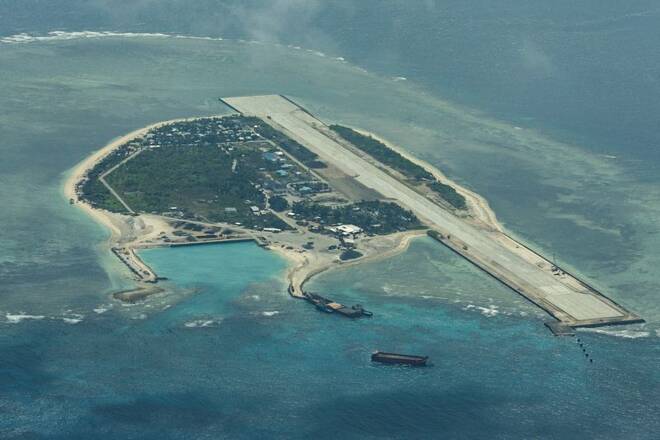Advertisement
Advertisement
Over the South China Sea, dispute simmers via radios and rhetoric
By:
By Eloisa Lopez ABOARD PHILIPPINES COAST GUARD PLANE, South China Sea (Reuters) - As a Philippine coast guard aircraft flew over the disputed Spratly islands in the South China Sea on Thursday, a message came in over the radio telling it to immediately leave "Chinese territory".
By Eloisa Lopez
ABOARD PHILIPPINES COAST GUARD PLANE, South China Sea (Reuters) – As a Philippine coast guard aircraft flew over the disputed Spratly islands in the South China Sea on Thursday, a message came in over the radio telling it to immediately leave “Chinese territory”.
Such warnings, from a Chinese coast guard ship, have become an almost daily ritual around one of the world’s most contested archipelagos, where China is one of five countries claiming the strategic islands – or at least some of them – as their own.
“Calling China coast guard vessel. You are transiting inside Philippine territorial sea,” the Philippine pilot radios back.
“Request identify yourself and state your intention to prevent misunderstanding,” he said.
China claims sovereignty over almost the entire South China Sea and has for years permanently deployed hundreds of coast guard and fishing vessels in disputed areas like the Spratlys, where it has dredged sand to build islands on reefs, and equipped them with missiles and runways.
Malaysia, Vietnam, Brunei and Taiwan also have claims in the Spratlys. The Philippines occupies nine features there, and has accused China of aggression and “swarming” by fishing vessels that it says are militia, including near the tiny Thitu island occupied by Manila since the 1970s.
A Reuters journalist joined the Philippine flight on Thursday and observed some of those Chinese boats dotted in the waters around Thitu, an island of 400 people. The Philippines last week accused the vessels, including a navy ship, of “slowly loitering”.
China said on Friday it has sovereignty over the Spratly Islands, known in China as the Nansha Islands, and its adjacent waters.
“Therefore, it is reasonable and legal for Chinese ships to carry out normal activities in waters under China’s jurisdiction,” Chinese foreign ministry spokesperson Mao Ning told a regular briefing.
The fly-by came amid repeated complaints by the government of President Ferdinand Marcos Jr against China’s actions, including its use of a laser that Manila said temporarily blinded crew members of a coast guard vessel last month.
The Philippines under Marcos has stepped up its rhetoric to challenge China and is seeking closer ties with former colonial power and defence ally the United States, including plans to hold joint sea patrols.
The plane flew over another hot spot for China-Philippines tensions – the Second Thomas Shoal – where the military grade laser was last month used to target a coast guard crew supporting a military resupply mission.
The Philippines has long maintained a small contingent of military aboard a rusty former U.S. navy ship that it ran aground on a reef there to preserve Manila’s territorial claim.
China’s coast guard challenged the plane again as it flew over the shoal, located inside the Philippines 200-mile exclusive economic zone.
“This is the Philippine Coast Guard,” the pilot responded.
“We are conducting a routine maritime patrol within our national airspace, and monitoring the safety of our fishermen,” it said.
(Writing by Karen Lema; Additional reporting by Joe Cash in BEIJING; Editing by Martin Petty, Ed Davies)
About the Author
Reuterscontributor
Reuters, the news and media division of Thomson Reuters, is the world’s largest international multimedia news provider reaching more than one billion people every day. Reuters provides trusted business, financial, national, and international news to professionals via Thomson Reuters desktops, the world's media organizations, and directly to consumers at Reuters.com and via Reuters TV. Learn more about Thomson Reuters products:
Advertisement
